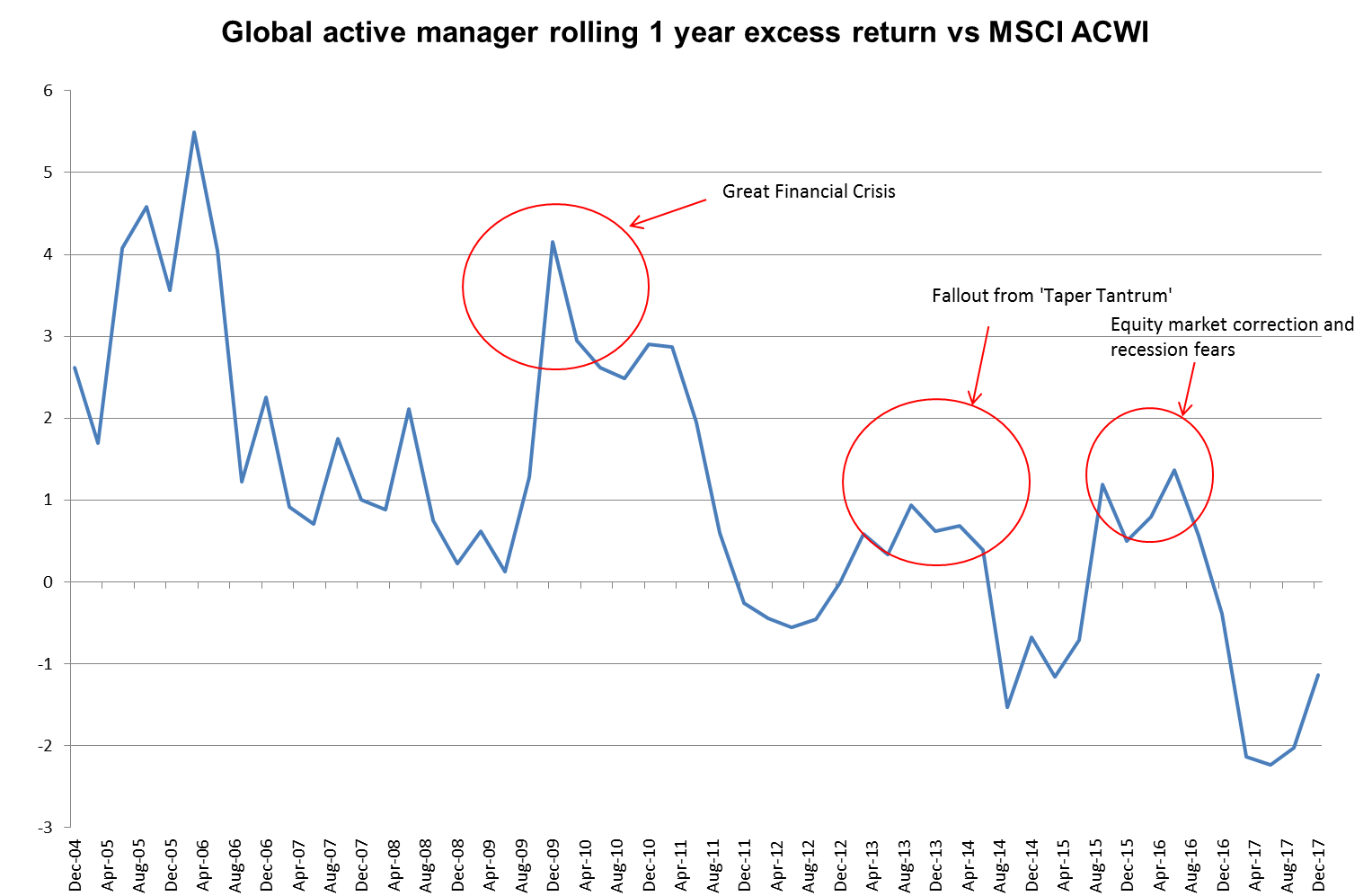Active managers have had a hard time in markets that have only gone one way, but the prospect of market volatility returning may offer them a lifeline, says Aon's Matthew Towsey.
The wager was that over 10 years, from roughly the beginning of 2008, a passive S&P 500 index fund would outperform a basket of hedge funds.
He not only won the bet but did so spectacularly. This seemed to mark another nail in the coffin of active management and a further boost to passive investing.
Many have lamented the fact that it is difficult to outperform a market that is only going one way; now is the time they need to deliver
Since the launch of the first market index listed exchange traded fund in 1993 the rise of passive investing has been astonishing.
It is estimated that flows of about $1.5tn (£1.1tn) have entered passive equity funds and exchange-traded funds since 2006, with similar outflows from actively managed equity funds.
The appeal is clearly down to three factors: low fees, the proliferation of product allowing customisation of exposures, and, crucially, the fact that equity markets have risen relentlessly since March 2009.
Volatility is good news for active
A further factor contributing to the rise of passive investing is the argument that most active managers do not outperform passive implementations.
It is certainly the case that the excess returns of active managers have fallen from extremely high levels in the early 2000s and have at times been negative, but the evidence is not clear cut.
Indeed there are certainly periods where active management outperforms a passive approach, at least for global equity strategies:

Source: eVestment, Aon
We can see from the above that excess returns tend to be generated in environments of heightened volatility.
The fallout from the financial crisis of 2008 saw a large uptick in active equity returns, and we also saw spikes in the fallout from the taper tantrum in 2013 and the sell-off in risk assets in Q3 2015, accompanied by deepening fears of recession.
These episodes were generally short-lived, as central banks kept interest rates at ultra-low levels and reassured markets that any policy changes would be taken slowly and in a controlled manner.
However, each bout of volatility was followed by an uptick in performance for active equity managers, suggesting that active managers can add value, particularly during volatile market events and the associated fallout.
Some managers relish market falls
Identifying this trend is easy enough for global equity strategies, but can the same argument be made for active approaches in general?
There is certainly a strong negative correlation between market volatility and equity index returns; when volatility rises the market generally falls, so passive approaches in a volatile environment will likely lose money.
There are a few reasons why active approaches may be able to fare better. First, they can stray away from the index, and the more active risk taken in equity strategies, the better.
Secondly, absolute return and hedge fund strategies can profit in strongly declining equity markets and thrive in more volatile conditions - as they have demonstrated in some of the previous episodes mentioned.
Ultimately, it is down to the managers themselves. Many have lamented the fact that it is difficult to outperform a market that is only going one way; now is the time they need to deliver.
If market volatility is here to stay and we once again see two-way markets, I believe we will see a resurgence in the active management industry.
Matthew Towsey is a principal and head of European liquid alternatives at consultancy Aon














